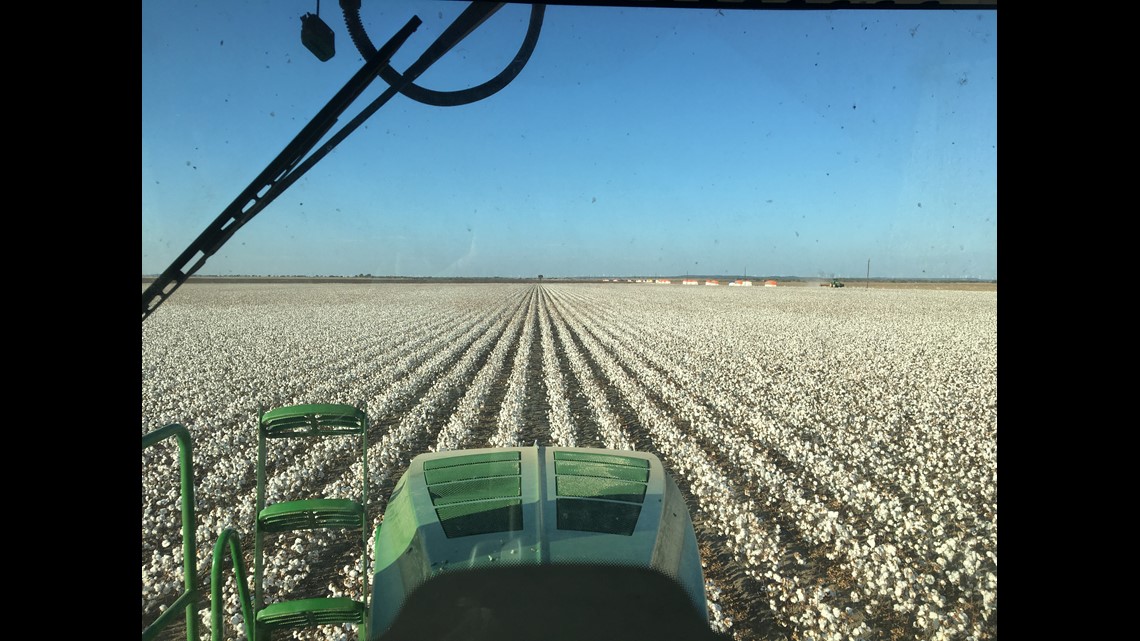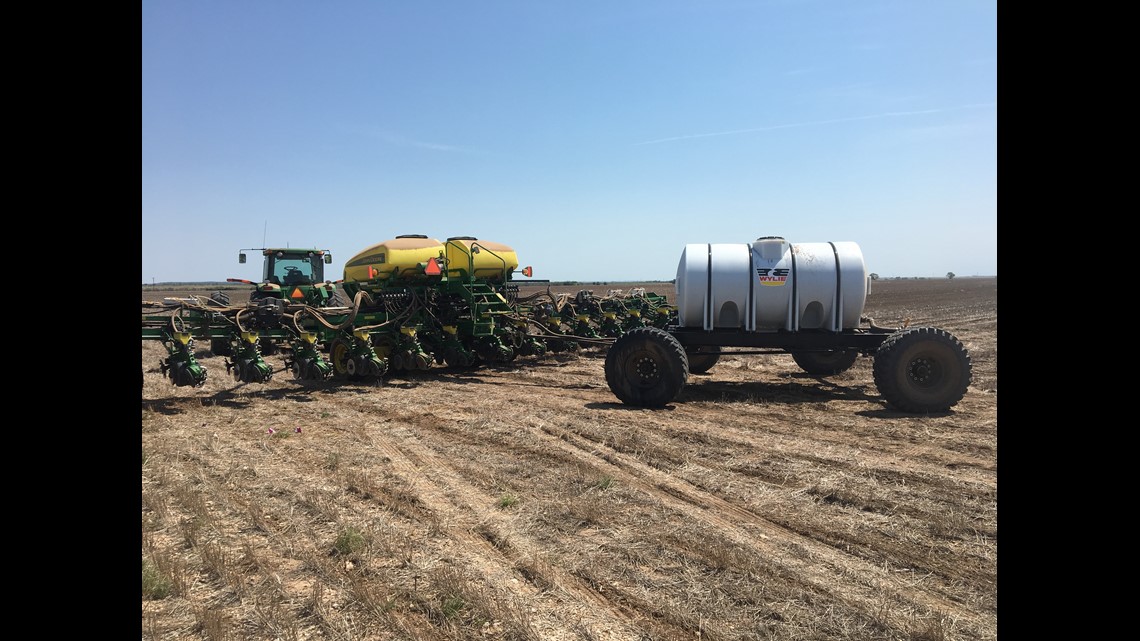TEXAS, USA — Experts say 20 million bales of cotton in the United States will not be processed from this year’s harvest, and those bales will carry over to next year’s supply.
According to Texas A&M professor and agrilife extension specialist John Robinson, the excess supply is a direct result of the world mills’ decline in production after supply chains were disrupted during the COVID-19 pandemic.
Robinson said the pandemic has a multi-faceted, “unprecedented” effect on the cotton market. Aside from distribution chain disruption, businesses were shuttered while consumers were sheltering at home, causing a decline in demand.
All of this led to a major price drop in stocks. At the beginning of March, the price of cotton was 70 cents per pound. By April, the price dropped 20 cents. According to Robinson, cotton is a commodity directly affected by a global economic outlook.
“Let’s put it that way, during tough times when the economy, when GDP is going down, the economy is going down, when employment is dropping and people are worried and stressed, they tend to cut back on buying new wardrobe and buying new homes. They don’t need towels and sheets and new carpets in a new home. They cut back on all that stuff, so the demand for cotton tends to go down when economic times are bad. And it goes up during boom times, so it follows the economy,” Robinson said. “If you think for a second, people always need to put gas in their truck, and they always need to put food on the table, but they don’t always need to buy a new wardrobe, so cotton fluctuates accordingly.”
The price of cotton has slowly been making a comeback, hitting 65 cents per pound, but Robinson doesn’t expect the trend to continue until the November harvest.


“We seem to be sort of range-bound on the upside to around 65 cents. In the last four weeks or so we have bumped up against 65 cents and we haven’t been able to get through it, so that seems to be the upper end of the range and my outlook is, unfortunately I think, with all the impacts of the pandemic on reduced cotton consumption, prices will probably slip back below 60 cents I am expecting sometime this fall.” Robinson said.
He said the price might be as much as 10 to 20 cents below what is takes a small farmer such as the ones in the Concho Valley to break even.
“For what the market is offering, it’s not break even. It’s below cost of production. Fortunately, from a farmer’s stand point, we have federal farm programs that provide some income and price support, but even those don’t restore a grower to where he would have been if he could have sold when prices were high. If you go back to January, farmers could have sold cotton for 70, 71, 72 cents and that opportunity is gone. And even crop insurance for a crop that didn’t make the yield or the federal income and price support programs that exist, none of those things are going to get a farmer back to what he would have made if he had cotton to sell during the high market prices before the pandemic,” he said.
Bill Belew owns a cotton farm near Winters. This year will be his 24th crop. Belew said he’s worried about what this year will bring.
“I think everyone’s concerned. I don’t know who couldn’t be,” Belew said.
The pandemic-fueled recession is not the only problem local farmers are facing. The weather has not been favorable this year. A spring hailstorm caused damage across the Concho Valley. It also forced many farmers to replant. The summer brought drought.
“We’ve gone about as far as we can go on the amount of moisture that we had in the soil, and we’re looking at a below average crop now,” Belew said. “I guess we’ll gather up what we have, but it’s not going to be good. I do know that. This is the third year in a row that mother nature has kind of put a whooping on us here.”


Belew said he has crop insurance to make up the price difference, but not every farmer can afford the cost. Robinson said policies can be pricey. Robinson also said there are federal programs to help farmers when the price or the yield in a county declines, but it only goes so far. He said the weather mixed with the poor market will result in abandoned fields.
“A number of fields, more acres won’t be harvested at all, because there is just nothing out there to pick, or it wouldn’t justify the cost of harvesting. There’s going to be more of that this year,” Robinson said.
He said many cotton farmers are hoping the decline in supply will mean higher prices and a lack of product would normally increase prices, but 2020 is different in many ways.
“I see a lot of discussion from farmers out in the thick of it. You know, they’re looking out their back door and they’re seeing the impact of drought. A lot of them are kind of expecting that the actual crop size is going to be lower than what is projected to be right now by the USDA and therefore, they’re concluding that prices ought to be higher. I’m just cautious about them taking that viewpoint, even though I do agree with them that probably the US crop forecast is going to be reduced USDA, but I don’t think that’s going to matter. The market outcome is still going to be price weakening. We get into the fall, I think prices are still heading lower and so I wouldn’t want farmers to be sitting around not doing anything, not pricing their crop, not hedging their cotton, when it’s at 65. It might be at 55 in two months,” Robinson said.
With a multi-million bale carryover to next year and economic uncertainty, cotton prices are not going to go back to a normal range anytime soon, he said.
“The problem is the pandemic impact on demand to my way of thinking is a long-term thing. Even if they announce tomorrow that we had a vaccine and we have cured the medical part of this, I think it would take months and months and months for consumers to get back to normal. And so from a clothing shopping consumer standpoint. I bet it’s Christmas of 2021, before we get back to normal," Robinson said.
Belew agreed with this assessment and said he felt fortunate none of his family has contracted COVID-19 and he has been able keep his employees. Belew also said he hopes, with all the supply chain disruptions, consumers become aware of where their goods come from, so he and his fellow area farmers can continue supplying quality cotton fiber.

